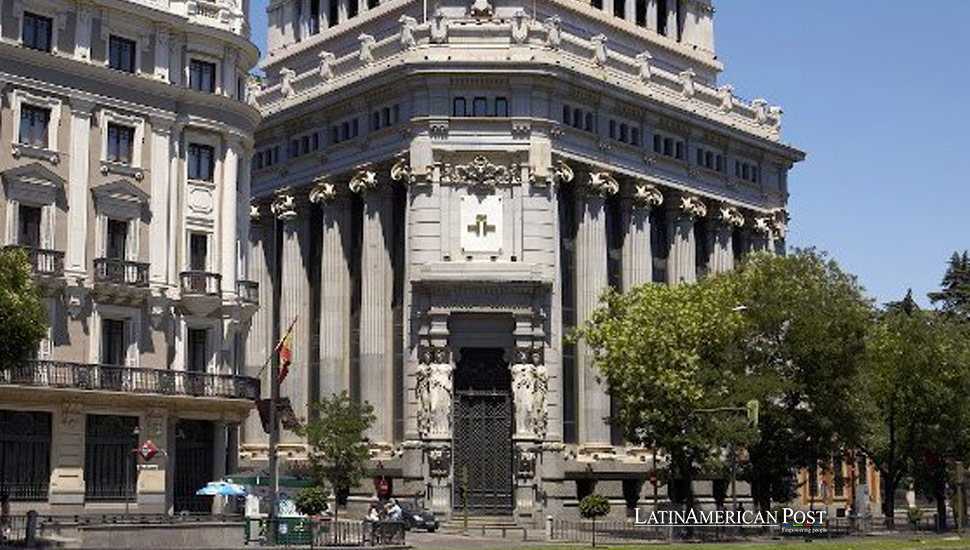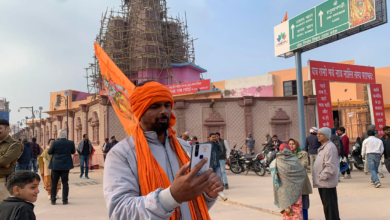Latin America’s Cultural Treasures Unveiled in Madrid Exhibit

Starting the following Monday in Madrid, an exhibition featuring cultural relics from Latin American luminaries, including a typewriter owned by Chile’s Nicanor Parra and dance shoes from Cuba’s Alicia Alonso, will open at the Instituto Cervantes during the celebrated Semana Cervantina.
An exhibition celebrating the rich cultural heritage of Latin America and Spain is set to open in the heart of Madrid. The Instituto Cervantes will host “La mayor riqueza. Legados escogidos de la Caja de las Letras” from next Monday until June 16th, showcasing a century of legacies from some of the most influential figures in Spanish and Latin American arts and letters.
The exhibit features over a hundred items stored in the old vaults of the Instituto Cervantes, a building dating back to 1918. Since 2007, renowned cultural figures from Spain and Latin America have left these items, starting with Spanish writer Francisco Ayala, the 1991 Cervantes Prize winner. These legacies are stored in one of the 1,800 safety deposit boxes, a ritual signifying the entrustment of personal and historically significant items to the institute.
Visitors to the exhibition can expect to see an array of personal items that tell the story of their owners’ lives and careers. For instance, Nicanor Parra’s typewriter, a vintage Remington from the 1950s, bears the marks of his prolific writing. Alicia Alonso’s dance shoes, a pair of delicate satin ballet slippers, are a testament to her grace and determination. Each artifact offers a tangible connection to these cultural icons’ personal and professional worlds.
Highlighting Latin American Icons
The exhibition is particularly notable for including items from Latin America, a testament to the region’s diverse cultural landscape. The typewriter of Chilean poet Nicanor Parra, a symbol of his profound impact on modern literature through his anti-poetry movement, and the dance shoes of Alicia Alonso, a testament to her indomitable spirit and artistic excellence as she overcame near-total blindness to become one of the world’s leading ballerinas, are among the many awe-inspiring artifacts.
Other notable items from Latin America include manuscripts and personal letters from Peruvian writer Alfredo Bryce Echenique, known for his witty and insightful novels, Argentine singer-songwriter Atahualpa Yupanqui, a folk music legend, and Cuban writer Leonardo Padura, known for his detective novels set in Havana. These pieces hold sentimental value and serve as primary sources for understanding the intellectual environments of their times, offering a unique insight into the cultural and historical context of Latin America.
The exhibition’s setting, the Instituto Cervantes, is not just a venue, but a global center for promoting the Spanish language and culture. Established in 1991, it is a beacon of Spanish culture, offering language courses, cultural events, and a library of over 600,000 books. The timing of the exhibition, coinciding with the awarding of the Premio Cervantes to Spanish writer Luis Mateo Díez in nearby Alcalá de Henares, further highlights Spain’s ongoing commitment to celebrating and preserving Spanish-language culture.
Challenges and Opportunities
While the exhibition offers a unique opportunity to view these treasures, it also serves as a stark reminder of the challenges of preserving cultural heritage in Latin America. Many regions grapple with funding issues, environmental damage, and political instability, all of which pose a threat to the preservation of these invaluable cultural artifacts. Exhibitions like this one are not just educational, but also serve as a call to action, fostering a greater appreciation and understanding of the urgent need to preserve such artifacts.
Also read: Mexica Pre-Columbian Legacy and Splendor Unveiled in Paris
La mayor riqueza. Legados escogidos de la Caja de las Letras” provides a rare window into the personal lives of some of Latin America’s most celebrated figures. Legados escogidos de la Caja de las Letras’ provides more than just a rare window into the personal lives of some of Latin America’s most celebrated figures. It is a rich educational experience, telling a story of creativity, struggle, and enduring influence that crosses borders and generations.
As visitors walk through the exhibition, they are not just invited to reflect on the power of cultural artifacts, but to immerse themselves in the history and culture of Latin America and Spain. This exhibition is not just a display of personal belongings, but a vibrant tapestry of Latin American and Spanish cultural history that resonates globally. It challenges us to consider how these cultures have shaped and been shaped by wider world events and how, through these artifacts, we can continue to learn from and engage with these rich histories. It is an invitation to all, regardless of nationality, to appreciate and celebrate the diversity and richness of our shared cultural heritage.




